
Autism Spectrum Teacher Podcast
Steph Reed
Autism Spectrum Teacher Podcast
- 50 minutes 8 secondsPodcast #14 PECS: Collaboration between home and school with Louise Maggs
Transcription coming soon...
Join the free live online PECS workshop on Thursday the 30th March.
Information on how to save your free spot over on the pinned post in my Facebook group Autism and Inclusive Teaching.
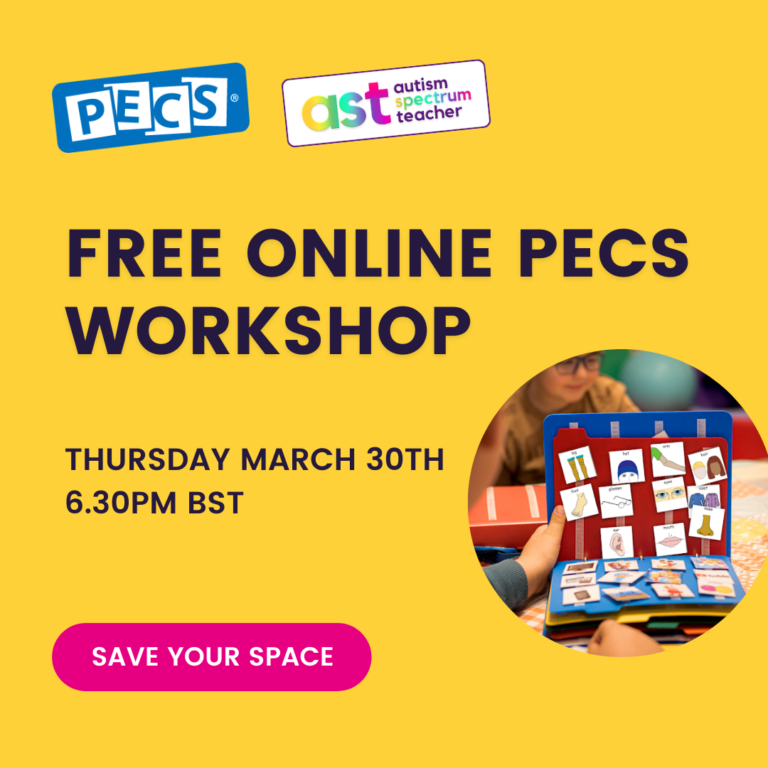
The post Podcast #14 PECS: Collaboration between home and school with Louise Maggs appeared first on Autism Spectrum Teacher.
27 March 2023, 7:45 pm - 28 minutes 2 secondsPodcast #13 Neurodivergent teachers: ADHD with Lynn McCann
Lynn McCann, autism specialist teacher, trainer, author and business lead of Reachout ASC, joins me on the podcast to explore ADHD from the perspective of professionals with lived experience, who have gone down the career route in specialist teaching! A great discussion on how our own neurotypes may have an impact on our work (positives and challenges), and on our understanding of ourselves and the young people we support.
Episode transcript:
Steph:
Lynn, thank you so much for joining the podcast. I’m really excited for our conversation today. And let’s just start with, can you tell us all about the wonderful work you do?
Lynn:
Okay. Well, I think it’s wonderful because I really enjoy it! But then I’m an autism specialist teacher, so I set up an independent service nine years ago now, on my own here in Lancashire and we provide a service to schools. So they buy us in and we work around providing very individual support programmes for children who are autistic.
And now over time that’s developed into children who also have ADHD and PDA and things like that. But it’s really good. And in these nine years there’s now a team of five specialist teachers working with us and we have some support staff as well, some of who are autistic. So I love my team, they are amazing and I love the work.
So alongside that we also do training. Anybody who wants to know about autism or ADHD, we will do training and that’s anywhere in the country or the world. Just ask us. We’ll do it.
Steph:
Brilliant. And you shared on your wonderful blog about your ADHD diagnosis. Was it last year that you received your diagnosis?
Lynn:
July 21.
Steph:
Yes and how did you, I mean, how did you find the process? How did it, you know, help you, I guess, understand the way that you learn and or how did it impact you?
Lynn:
Yes, it’s interesting, isn’t it? Because it started off because I’m now 54 and it started off around 50. And I think everybody gets, you know, what’s going on in my life? middle aged crisis thing. But I’ve been doing a lot of work around girls and autism and the research and I kept coming across ADHD in girls and I kept having like shivers through me thinking, Oh my gosh, it sounds like me.
This sounds like me. So near my 50th birthday, I went to my doctors with a 4 page essay of why I thought I had ADHD. Because I can hyperfocus, and I said, please send me for a referral. And I made the specific choice to go down the NHS route, partly because I want to help the kids and young people and people that I work with understand that process.
And I know it takes a long time and you’ve got to work out what you do while you’re waiting. So I thought, well, if I’ve experienced that myself, I’ve got something to share. So in the first year they didn’t send my referral off, said they lost it. And so I went back after a year and said I’ve heard nothing, so made them send it off this time and so that took.
Then I was on a two year waiting list and in July 21 I finally had my online assessment which took an hour and a half, very intense right to the end of it. I said, Yeah, I’ve no doubt that you’ve combined ADHD, so but in the meantime I’ve done that hyper focusing and I’d done a university certificate in ADHD. I’d looked and researched everything and I talked to my family and my friends, even an old school friend actually, to kind of get all the evidence together of of whether that was true or not.
Because obviously you think, am I right? Have I got it wrong with all that doubt that you have. So I had enough evidence, but it wasn’t until he said yes that I really believed it.
Steph:
I can resonate with that and, and especially around like thinking, you know, am I doing this? You know, why am I doing this? Is there is there a reason behind it? I was the same when I was diagnosed with dyslexia and ADHD and kind of I it was kind of like, okay, I mean, I, I guess I already knew.
But actually when you hear it from somebody, you know, it just kind of confirms your understanding. And then I guess, therefore, for me, trying to work out is there, you know, is there other ways I can do things that’s actually going to help me? I’ve been trying to do it as a certain way. I may be. I don’t know.
I’m thinking maybe specifically with learning. I, I knew at that point why I was I had had previous difficulties in, in my education and then thinking, okay, okay, how can I because I was 19 when I was diagnosed. So I then went to university and was able to do things slightly different. But having that kind of understanding really kind of helps, I guess in terms of yeah, that understanding of yourself. Is there anything like do you think back to your education and you’re like, Oh, okay!
Lynn:
I’ve spent a lot of my life and get so badly exams. So I was top of the class in so many subjects. So it’s obviously quite clever, but my exam results were quite poor for what I should have achieved really. I mean, I’m obviously a bit older, so I think, you know, I did my exams in the eighties and there was no kind of extra help or even discussion about why that might be.
And then when I went to university, to do my teacher training, I was always on the last minute with everything. And again, you know, I just felt like I never achieved what I could have done. And I didn’t know what that barrier was. And I, I kind of grieved for that a little bit since, you know, thinking and you can’t go back and change things.
But I know now that, you know, I’m a voracious learner. I love learning, but I’ve kind of never even gone for to do a masters, for example, because I’m too scared of failing with my so I probably could do it now, but I think it just hangs around, doesn’t it? Yeah, but I’ve been a lot kinder to myself.
Just been all that looking back on everything. You reevaluate everything, don’t you? I bet you’ve done that as well. Yeah. And then you kind of helps you be more kind to yourself, I think.
Steph:
Yeah. Yeah. And it was, I mean it took me quite a while, like to link why I do the work that I do back to my own personal experiences. I don’t know why it took so long. It wasn’t until I actually had started doing my autism specialist teaching business. I went on a business course and we were asked the question about why, why do you do the work you’re doing? At that time, I you know, I was thinking I just love, I love interacting with autistic individuals. I just, I just love it. I love it. And then and I was really questioned on it. But why do you love it? Why do you love going into schools? And then, you know, I really thought about, okay, when I’m, when I’m in the classroom, I see, I feel like I see things that maybe other other teachers might not see or they might not pick up on. Why?
And then I’m thinking, you know, I can, I can feel it, you know, like really kind of thinking, hang on a minute, there is a reason why I’m so passionate about the work, the work I do. And I wonder whether it’s similar with you. You know, I really I can go into a classroom and I just like advocating for the child just comes so natural to me.
And I wonder if I’m, you know, deep inside there is I’m thinking of myself as well. Like, you know, maybe things could have been different if there would have been these adaptions when I was at school or, you know, just seeing things where the seemingly little adaptions can make such a difference. Um, do you feel or do you think about, well, maybe the question is how do you think maybe your own personal experience of ADHD helps with the work you do?
Lynn:
I think very similar to you actually. Right from the first when I went into teaching, I was always really had a big heart for children with special educational needs. And when I started teaching autistic children and then I went into a specialist school as well, I went on supply and never left for eight years, but it was just about I could see something about the children, which was great potential and getting to know each child individually and like the spark of intelligence that was there, that was not recognized by other people and what what was not bring in, that was the barriers they were experiencing around them.
So it could be a communication barrier or sensory barrier. And I just got it, you know, and I think, yes, it does come up here in experience because if you’ve had to experience barriers yourself, then that does give you that empathy. And you know, I got a lot of empathy back from autistic young people as well. And just by that connection, so I was able to advocate for them and, you know, just bring to the teachers who were working with them and insight into, you know, their potential.
And if we just did this and that, would, you know, allow that and so on. And yeah, I really love it for that reason. And because they have helped me in being very accepting, very adapting as well. It’s a two way relationship, isn’t it? And that’s kind of where it comes from, if that all makes sense.
Steph:
Yeah, yeah. I have met quite a few teachers and probably you because I know you’ve been doing your, is it a neurodivergent teach meet? I mean I’ve I’ve met many teachers who are in the, you know, the field of special educational needs and, you know, maybe they can also relate some of the things we’re talking about maybe through their own personal experience or, you know, something, teachers go into this this field because they’re really passionate about about children and supporting children’s learning.
I would love to hear about how your work around the the the teach meets have been going, have you been doing many?
Lynn:
No, we just try to as an experiment because you know when we do training with schools, we’re very often getting teachers coming to us afterwards and say, you know, that sounds like me. And and we’re finding this is in mainstream school. A lot of teachers who are very isolated, you know, struggling with the same sort of things that I’ve struggled with.
And and just, you know, that bravery to come to some, come up to somebody and says, I might have these struggles, too. And a lot of the struggles for teachers is that we’re in a system that really kind of pushes us on a certain ways of doing things. And crazy deadlines and loads of, you know, additional work. But also the changes it can be kind of set up to do something and then suddenly change it and expect you to adapt.
And that’s hard for anybody who’s neurodivergent. And and I think that it’s not the time with the children because that is the joy. It’s actually additional stuff. And I know when I was teaching in schools that that is what nearly crushed me so many times. It’s just, you know, you’ve got this, do you got it? Or can you do it this way?
Now, can you do it that way and that and managing my time around it, because I do struggle with the concept of time.
Steph:
Yes me too.
Lynn:
And it’s and I hear from teachers as well, which really upsets me, is that when they have any kind of, you know, try to talk to senior leaders or their head teachers about it, then the professionalism is questioned. That really makes me angry, you know. Well, maybe you’re in the wrong profession. That has been said to a number of teachers because they’re struggling with, you know, this little stuff and the pressure and everything on top.
And I just I mean, it’s against the Equality Act for a start. It’s discrimination. But I think that’s why we put the teach meet together is we just thought we’ll create a safe space, start the conversation and look together. You know, from that, what we learn from each other. So there is a Facebook page called Neurodivergent Teachers, which I’m involved in with some other people.
And it would be really good, you know, to let people know that it’s there and just find a safe space. I don’t know what we’re going to do. I don’t know if we’re going to change the world, but we just care. And we understand. And I guess thats a good place to start from. I think.
Steph:
You know, you’ve just said some really helpful things. And I know from my experience, if I think back to so at the moment I’m working for myself, but before that my last two positions in a school and they were both when I had leadership positions, my, my two leadership positions that I’ve done. So the first one I did, I at that point, I don’t know.
I don’t know why I didn’t feel comfortable to talk about my neurodivergence and I didn’t and I, I got burnt out and it was hard. And in my second, that second leadership position, I started talking about some of the things, you know, for example, a room that I didn’t have my own office. I was a SENCo and I was constantly moving about.
I struggled so hard to be able to concentrate in the rooms I was working. People were in and out. It was tough, but I, knew I just had to talk about it. So I, I did and I did have a very, it was a very supportive senior leadership team that I worked with. And it actually showed me that I needed to start talking about these things.
You know, there are things that I find difficult that somebody else might not find difficult. And actually there are things that we can do. And it sounds, again, like this whole kind of when we think about the work we do, it seems like it should be obvious that people would be supportive. But I mean, what you’ve just said there, it’s definitely not the case all the time.
I think having the confidence to be able to talk about it, I mean, that showed me that, you know, for a start they were listening. We made changes, you know, at that point this was before the pandemic and we made a plan, I was going to do my written work at home. Brilliant. That work better for me. So, you know, I think, you know, groups like what you just talked about are very supportive in helping to provide that support network and and having the confidence to talk about, you know, maybe things that you’re finding difficult and also realizing that all of those skills that we have I know one of the things that for me that I’ve been learning about and I’m still learning about, I know that there are times where I can focus really well and there are times that I don’t, and that’s okay. And at those times I’m going to do something different. Before I would just try. I would try to do it and it would just be I would just be so unproductive.
Lynn:
So I put a brick wall in your head, isn’t it?
Steph:
Yeah. Oh, my gosh. Sometimes I, you know, the struggle of just trying to to be productive. I used to really fight it and get so frustrated with myself. And now I’m glad I’ve got to this point where I’m just like, okay, I’m just going to try and do something maybe kind of like what I would suggest with with the children.
Lynn:
I want to cry because I’m saying exactly what I’ve been through and it is such a battle with yourself sometimes. Yeah, I think I’m having to learn to kind of build in times or I just let it go. Yeah, I might have seven reports to write, but there’s no way I can. sit in front of a computer and write anything because it ain’t coming.
But there is that flexibility, I suppose, working for yourself to do that. But then I get stressed because it’s piling up and then some days I’ll get through the lot, you know, and it’s like, I’ll just have to go with it and not fight it so much and try and go with it.
Steph:
Yeah, yeah. It’s difficult though, isn’t it? I mean, I know sometimes I all of a sudden have this I’m in the zone and it’s 9:00 at night and I’m like, okay, okay. I’m just going to I’m just going to go with it for a bit because I know that it might not be like this tomorrow. Yeah, I think, you know, I’m really, really pleased that, you know, neurodiversity is becoming more and more of a topic of discussion and people’s understanding is becoming you know, we’re becoming more aware.
And hopefully the more we talk about these things, the more people are going to understand. And actually in a in a work environment, whether you’re a teacher or someone else, people are going to have different different things they need to be productive and that’s fine. So, yeah, it’s great. Neurodivergent Teachers, I’m going to see if I’m part of that Facebook group, if not I need to be.
Lynn:
Yeah, we’re also putting together so I have another autistic teacher who works with me and she’s brilliant at doing research. So she’s put together a whole recorded and thing about the Equality Act, around reasonable adjustments about employment law because we do have rights, you know, behind us to ask for reasonable adjustments. And they can be simple things like being able to work from home or asking for an agenda before a meeting.
That makes a huge difference to me. And so, as you know, I asked you for some questions before I came, because otherwise my brain has got all these other things in my mind and I need to narrow it down. So it’s just providing that extra structure that makes me do the best work I can. And that’s what every teacher really should be able to ask because it is the law and the Equality Act is really useful to know about.
So we’ve put this information together. Hopefully we’re going to release it in the New Year, but we do already have a free course. On being a Neurodivergent teacher. I think it’s called been an autistic teacher, but it covers everything really and I’ll send you the link and we’ve had loads of teachers get in touch with us to say how helpful that is.
It’s just, you know, a short thing to just realize that they have got these rights that they don’t have to do it confrontationally. You know, it can just come up in conversation. But also, you know, the employees have responsibilities to look after them.
Not helping them. That’s the big thing. That’s a lot of bullying. And bullying in the workplace is real. It happened to me. That’s how I ended up leaving my last job. So I’ve worked for five different head teachers in my career and three of them were absolutely brilliant. They, you know, they gave me really positive feedback where I was a good teacher, helped me develop my skills and gave me space to do things in the way that I work best.
And I had two headteachers, one in my early career who and bullied me so badly and picked on things so minimal, you know, like little tiny things that I ended up crashing out of teaching and didn’t go back for six months. I had young children at the time and really awful and no confidence to stick up for myself.
The second time I felt I was bullied. I did stick up for myself and I left. I did leave because I was threatened and and I was threatened with incompetency procedures. And I just knew that wasn’t right. Sadly, the union I was in at the time wasn’t much help, but I decided I was going to do things my way because that wasn’t true.
So I did leave and I set up this business and here I am nine years later.
Steph:
Well done Lynn!
Lynn:
I think it’s important. Just know that sometimes it’s the wrong place. Not. Not them. That’s wrong.
Steph:
Yes. It’s I’m I’m really sorry to hear that. And I was on I’m part of a Facebook group called I forget what it’s called anyway it’s is for SENCOs and teachers. And there are there have been a number of situations like what you’ve just described where a teacher has. Yeah, bullying it’s bullying and gosh, you need these support networks around you.
And I think that’s an important point that you just made. Sometimes you’re just not in the right environment. If I kind of round up what we were saying, I guess, like being able to talk about these things, hopefully, you know, with support networks around you, having that confidence and you mentioned about, you know, we do have rights, there are things there to to to help.
And one more thing, because I just thought about this before Access to Work, which is, you know, maybe people don’t know about this is government funding for it’s available for individuals to support their their work and I did an application a couple of years ago and was supported with things to help my work such as I’ve got some speech to text technology, which is really good for me in terms of I can I can talk sometimes talk the sentence much more clearer than if I’m typing it.
That’s really helped and a few other things. So if you haven’t looked at Access to Work, check it out. They might be able to support you or you know who you work.
Lynn:
There is currently a waiting list on that? Actually, I’ve heard of people recently, so we’ve had two of our team use Access to Work for travel costs actually and try and help with is epileptic and needed support with transport. So they got that and our autistic member of stuff gets a taxi to work because of the sensory issues around public transport. So there’s lots of different ways it can help.
Yes, but they’re getting a lot of people now. People know about it a bit more. Yeah, they are getting that waiting list, so it is worth applying. But just be aware that everything’s got a waiting list at the moment, hasn’t it?
Steph:
Yeah. Everything. Oh, thank you so much, Lynne. It’s been such a pleasure to speak to you. And yeah, if you want to check out Lynne’s website it is reachoutasc.com, isn’t that right? And I’m going to be checking out that Facebook group as well. Neurodivergent teachers.
Lynn:
I’ll send you the link and I’ll send you the link to that free being an autistic teacher course as well. So if you share that’ll be great.
Steph:
Great. Yes, I’ll share that. Thank you. And have a great day.
Lynn:
Thank you. Lovely to speak with yo
The post Podcast #13 Neurodivergent teachers: ADHD with Lynn McCann appeared first on Autism Spectrum Teacher.
27 January 2023, 4:27 pm - 23 minutes 44 secondsPodcast #12 The value of neurodiversity with Gareth Jones
Welcome to Series 2 of the Autism Spectrum Teacher Podcast!
Back with a new name: Autism, Neurodiversity and Me.
Still exploring autism in the context of education, whilst opening up the conversation to a broader discussion about neurodiversity and being neurodivergent.Transcription
Steph Reed: Hello and a big welcome to the new series of the Autism Spectrum Teacher Podcast! And it has a new name: Autism Neurodiversity and me. I am your host, Steph Reed. I’m a neurodivergent, autism specialist teacher and school consultant, and also a DJ and I work with a variety of mainstream and specialist settings focused on enhancing provision and practice for autistic students.
So the first series of the podcast focused on autism and teaching. And what I want to do with this series is open up the conversation a bit more about neurodiversity especially with the more that I learn, the more I understand my own neurotype and the link to mental health, the more I understand about how to help myself as well as the students I so fondly dedicate my time to and I’ve got some really exciting guests coming up on the podcast to explore these themes, which I really cannot wait for you to hear!
So my first guest is very special because he really gave me the boost I needed after not releasing a podcast episode for two years. I can’t believe it’s been that long! Believe me, I really wanted to do this so much sooner. But here we are and I’m so grateful for today’s guest. The wonderful Gareth Jones also known as Gaz Top.
He’s a TV presenter, producer, director, podcaster. You may remember him from the children’s TV series such as Get Fresh, How To and the Big Bang. And he was also the first person to swim across Wales from south to north whilst making a documentary series and Gareth is just generally a ray of sunshine who I’ve had the absolute pleasure of spending time with.
And so enter the podcast, Gareth Jones and his insights on neurodiversity!
Oh, Gareth, thank you for coming on the podcast. And first of all, I just want to say a big thank you because you’ve really helped me to kick start this second series of the podcast. I’ve wanted to get started with this second series of the podcast for two years, and that’s actually quite embarrassing for me to say.
And it’s been on my board and I’ve got all of these ideas, I’m doing all of these, lots of different things at the same time, and I’ve wanted to do it. But I think one of the things I really find difficult is, being dyslexic, having ADHD, that task initiation or, you know, just getting something going. I’ve got the ideas.
But yeah, getting it going. And actually, you know, I’ll just say that we met at a party and we were talking about lots of different things. Everything Wales, dialect and autism came up and then we were talking about podcasts. Gareth does a podcast and I guess just talking about it really, really helped. And then, yeah, thank you for sending, of course that email because you broke it down for me. Really, it really, really helped. And here we are.
Gareth Jones: Well, thank you very much indeed for taking my advice. Advice is easy to give, but I see this more of a collaboration than an advice. You know, I’ve made podcasts for eight years, so I know what’s involved in planning starting, and completing a task, and it’s something that I’ve learned to do. And it’s not something that everybody has the ability to do.
And sometimes you need a bit of encouragement, a bit of guidance, and a list, often a list is the answer. You know, if you can write a list, then okay, just do one thing on the list. Starting is always a problem. And I think for people with ADHD, you’ve started 100 things in your head. Yeah, just trying to fix it down to the one thing you have to do in the real world doesn’t come easy always for people of that.
Structure, let’s say. My experience with autism goes way, way, way back. I remember I said, I’m very old now. I’m 61 years old. So I remember way back in the, I think this was a very late 1960s. My mother was reading the Sunday Times supplement and there was an article in it about children in America who you could not reach.
I don’t think they said, “locked in”, but you could not get through to these people. My mother read it and had a eureka moment. At the end of it she says, Oh my gosh, this is Keith, over the road. And she ran into the house with the newspaper supplement still in her dressing gown and went to visit our neighbours who lived across the road, knocked on the door and said, “Syril, this is your Keith”. Now their Keith sat in front of the television with it tuned to no channels. So was just sort of interference and gash on the screen.
And he rocked back and forward and shook his head and moaned and just did that 10, 20 hours a day. He would do it all the time if he could. And the family and the people who’d been speaking to in the health service at that time had no idea. And I’m going to use this in quotes. What was ‘wrong’ with Keith?
There was nothing wrong with Keith. We now understand that Keith was very, very, very much at one end of the autistic spectrum. And through that diagnosis, he got help and lived a functioning life, a good life. And that was the very dawn of my understanding of autism. So it’s always been there for me. These are people growing up in North Wales who I knew were different and I valued the difference because I think there is value in neurodiversity.
I remember I used to make a television programme, I used to produce and direct a TV show with my company, Whiz Bang TV that was about video games. This was some 18, 20 years ago now. And one of the guys who worked on the team was one of those people who had what you might describe as special interest.
And a slightly faraway look in his eyes. My and I realized his thorough and extensive knowledge of some facets of video gaming were going to be a real benefit to our program. He helped us provide content, you know, so neurodiverse people are essential in not just social society but in work society. Yeah, as well. And I value people who are different.
I’m different, I’m a bit odd. I’m not quite sure where I am in the world, but I am a bit odd. And so I gravitate to other oddballs. Perhaps that’s why I’m on this program with you! I think. And it’s it’s never been a problem. It’s been an asset to me. I think people are often confused about people on the spectrum.
They kind of expect people with autism to be savants, to have a superpower. And that’s not always the case. A friend of mine who is diagnosed with a who’s diagnosed with autism late in life when she was 60. Is now coming to terms with her behaviour as a child. And her continued behaviour is an adult and sometimes can modify that behaviour. But most of the time we just love her the way she is.
Steph Reed: Yes. And I guess what you just mentioned there was I mean, especially after the film Rainman came out, I guess that really, you know, made people think about autism in a specific way. You know, you know, do maybe most autistic individuals have have these savant abilities? but of course, that’s not, not the case. And for many people, you know, everyone is so different.
Everyone has their own unique abilities. Their own unique interests. But yes, it’s just understanding that autism is a big kind of vast spectrum and I guess, you know, not even just with two ends, but just, you know, there’s just an infinite amount of possibilities. But I guess what we’re saying is, you know, we, everybody brings value and, you know, everyone has their own strengths. So, you know, if we were all the same, gosh, that would be boring! You wouldn’t get anywhere.
Gareth Jones: I’m a big fan. I mean, Star Trek, we believe in what’s called infinite diversity in infinite combinations. And I genuinely believe that. I genuinely believe that, you know, the successive bridge of the Star Trek was the fact that there were, you know, black women, there were Russians, there were Chinese, there were white American males. And there was an alien to put it all in context, you know, and I think that that that diversity even exists within my experience of the people I’ve met with autism.
It’s a sort of pick and mix. You have some of the traits, but you have a different set of traits and it’s a very broad set of markers that you might find that different people have in different ways.
Let me tell you a story, I’m full of stories today. A dear friend of mine many years ago said, Oh, you’ve got to meet my friend Radar Jim and wait, what Radar Jim? Oh, you’re going to love Radar Jim. I said why’s he called Radar Jim? I said, Well, you’ll know when you meet him. And she introduced me to Jim and Jim had a far away look in his eyes and carried a scrapbook under his arm all the time.
And that scrapbook was full of pictures of radar installations at military bases around the UK that he’d gone and taken pictures of and radar Jim was called Radar Jim because he loved radar. He knew everything about radar. He knew the scientific principles on which it worked. He knew the names of the people who developed it. In Britain during the Second World War, he knew the names of the people above them in the Ministry of Defense.
He knew how the war played out. He knew how peace came about and how the United Nations came about as a result of that and the names of the people in the initial member states of the United Nations. So whilst Radar Jim’s special interest was Radar, that was simply his access point to a very, very broad and wide world of knowledge that most of us would never get to.
Ask him what he knew about and he would say Radar. And that’s all he cared about. So I think that’s an example of it being an asset, but not a superpower. Yeah, it’s just a way of describing how people think, in my layman’s opinion, you know, it’s just a way of describing, it doesn’t mean that you are disabled, it doesn’t mean that you are super powered.
It means that, oh, you’re the type of person who can be described loosely in this way. And that’s the key to understanding, isn’t it? You know, if you’ve got a term in Wales, we have an expression give the devil, an expression, give the devil a name. And that is if something’s bugging you, give it a name, even if it’s not the name thing it is. And then you have control, or at least the beginning of understanding over it.
Steph Reed: Do you know what I, when I think about where we’re heading and our understanding as a, as a society, I really like to think about a shift from thinking about autism, ADHD as disorders and moving to a space where we’re really recognising and, you know, understanding that this is different ways of thinking, different ways of focusing.
What you just described. There was an ability to focus on a specific subject so intently that somebody else would probably not be able to do. And the skills and the strength and the value there is in that. And I think maybe because we have this, you know, we have this system of it’s a very medical system of diagnosing attention deficit hyperactivity disorder, autistic spectrum disorder, very negative medical terminology, which, you know, of course, affects the way that people think.
And they view about what that means. And so I like to think that we, you know, we’re heading hopefully in this, especially with the neurodiversity paradigm, really understanding that we’re all human beings. We all have very different abilities, different interests. And that is great.
Gareth Jones: Absolutely right. I think you’ve nailed it. I think the term disorder is unfair. I think bias might be a closer word to what we’re trying to say, oh, this person has an autistic bias. You know, some people have a over empathic bias and they’re lovely to be with and they’re darlings. And that doesn’t mean it’s a disorder. And so people with non neurotypical behaviours, again, non neurotypical is a term that suggests that they are beneath or otherworldly, you know, and I won’t say they, I mean we because there is no such thing as they, right.
There’s no us and them. We are all people trying to work on the same issues. So yeah, let’s just, let’s campaign to remove the word disorder. Let’s, let’s find a better word. I’m sure there a better thinkers than me that can come up with that word.
Steph Reed: Definitely. And so you are, you are a parent and of a neurodiverse family. I guess what I really love to, to bring with this podcast is any kind of, you know, practical tips or takeaways or things that maybe any other parents out there, maybe they’re on, they’re starting their journey to understanding neurodiversity, or maybe they’re well on the way and they’re having some challenges at the moment or I mean, is there any kind of any words of wisdom or advice that you would give as a as a parent?
Gareth Jones: Well, I, I used to do a program called How, you know, in which we would answer any question with how and give you a real nugget of information. So maybe I’ve got a neurodiverse, ‘how’. Let’s see, I’m going to do this without naming the members of my family who are either ADHD or autistic, because I think that would impinge on their privacy.
But in terms of general advice, you know, for me, either a number of number of members of my family who are autistic or some of whom are being diagnosed, those who haven’t been diagnosed yet. But the advice I would give, you know, if is how do you deal with autism, I suppose that would be it wouldn’t it, if it was a ‘how?’ how would you deal with autism?
And I think the best advice I could give is be yourself and let them be themselves.
Don’t expect people to behave differently. Differently to you, to behave in a typical way. Allow them this. Okay. He’s another wonderful old adage. It’s slightly sexist, but when I explain you, you’ll understand that I’m not using it in a sexist way here, I hope. They used to say way back in the seventies, you know that story, three blokes trying to get an engine out of a car and they’ve got, they’ve got air and a crane over the car and they can lift the engine out of the bonnet of the car, but they can’t quite get it to clear and they can’t quite get it out.
And they’ve been thinking about it, well can we make it higher? Can we do this? Can we make a shorter chain or can we file a bit off? And we’ve been there for 3 hours. And then one of the blokes wife, one of the blokes wives comes outside, looks at three guys and says, “well, why don’t you just let the air out of the tires and let the car down and it will clear that way?”
Now, that was a sexist observation of how people believed men and women thought differently in the past. I don’t believe that there is no difference between the female brain and the male brain. There is no left brain. There is no right brain. The brain is a far more nuanced, complicated network of sparking bits of bioelectricity than you can define in left or right or male or female.
What that story does tell you is that some people see things different, differently, And they can sometimes offer a solution. Sometimes that could be a problem. So think of it that way. Question If you’ve got a child who will only wear one pair of shoes because that’s in their nature, that’s one of the markers in their pick and mix of autistic traits you might say. Don’t get angry with them and force them to wear a different pair of shoes. Let them wear those shoes. Even if those shoes are worn out, find a way of listening to what that person is expressing and feeling. And work with that. That’s all you have to do. Little bit by bit by bit.
It can be hard sometimes, yes. But it’s it’s rewarding and I think it’s the solution. So that’s it. That’s how you deal with an autistic person in your life? Well, quite easily is the answer by listening.
Steph Reed: Yes. Oh, I love that! Thank you! I love it!
Gareth Jones: I haven’t been planning that. That just came to me there. And then I think that’s how it works for me.
Steph Reed: Perfect. I couldn’t have said it better myself. Thank you, Gareth.
Gareth Jones: Thank you. Thank you for having me.
Steph Reed: I’m so grateful to have met you and to have had these conversations and I look forward to spending more time with you in the future.
Gareth Jones: Steph, you are doing remarkable good work. You’re a great broadcaster. You’re a tremendous communicator. You are dealing with a subject that is close to my heart. I wish you all the best through the whole next series.
The post Podcast #12 The value of neurodiversity with Gareth Jones appeared first on Autism Spectrum Teacher.
10 January 2023, 9:02 pm - 47 minutes 28 secondsPodcast #11 Ideas to help children at home during the COVID-19 crisisLast Updated on January 30, 2023 by Steph Reed
Podcast Episode Notes
This is a live recording from a Facebook Live I hosted this week. It took place in a group aimed at general support through the Covid-19 Crisis, in the island of Jersey, where I am from.
I took this opportunity to talk to parents and carers about potential strategies that could be helpful for families with children with special needs, when spending all day at home. I also answered questions that came up during the Facebook Live.
We are living in difficult and unpredictable times. This is very challenging for all of us, most especially those with additional needs.
Every family has very different needs, as well as access to different sized space and resources.
We all have very different circumstances and therefore we need to think about what is manageable for our unique circumstances.
We want to try to avoid becoming stressed.
Stressed parents and carers equals stressed children.
Recognise how we are modelling being calm and if there is anything we can do further to support the children to be calm. If we show that we are anxious, our children will inevitably also be anxious.
Do what is manageable in our own, unique circumstances
Go back over previous advice from professionals, this will be specific to your child’s needs and there may be helpful strategies that you can implement at home. Everyone’s needs are so different.
Creating calm times throughout the day
Do some calming activities together.
Examples of calming activities could be: listening to soothing music, massage on hands or feet with cream, sensory play or looking at a book. What are some activities that have a calming effect on your child? Is this something you can do together? Is this something the child prefers to do alone? Can you structure this into the daily routine at specific times, to create a familiar and predictable pattern?
Movement activities throughout the day
Alerting and energising movement activities are great to get the body moving, get children exercising and also using any hyperactive energy!
It can be helpful to structure in times throughout the day where movement activities take place. At school, I would often structure movement activities before we took part in learning, to get the children’s bodies all warmed up and regulated.
This would often get them ready to focus on the learning task. For some children, I would have very regular movement breaks, such as every half an hour. It depends on the needs of the child, but for some very active children, this can be very helpful for them to keep their bodies moving.Ideas for movement breaks include: a circuit or a visual structure of different exercises (such as star jumps and stretches), rolling the ball to each other, a dancing, yoga or exercise video on YouYube.
5 minutes movement break examples:
Shake Your Sillies Out dancing song
Structure of the day
Implementing a consistent routine can help the children become familiar with what will happen in the day.
For example, planning ahead when you and the children will do calming activities and do movement activities.
Over time, a predictable routine can help children feel safe and in control, as they know what will be happening.Any school learning that has been planned with your teacher can be timetabled in at a specific time in the day.
Break down the tasks that you know will happen in the day.Visual structure
It can really help children to know what they will be doing through visual structure or a ‘visual timetable’. How effective a visual support will be will depend on what meaning a child will take from the pictures (or text).
Pictures, images and symbols can be very helpful in giving meaning. Therefore a timetable of pictures can be very supportive.
Lets take all of the above information and put it into a visual structure. For example, a following schedule of a session with the following routine:
- Rolling the ball
- Reading a book
- Counting socks
- Hand massage
Finding these images on Google, taking photos or even drawing images and putting them in a clear structure, can help the child by showing them what is coming next. Over time you can change these images, as and when necessary. Visual structure helps give the child a clear beginning, ending and helps them to know what they will be doing. Here is a visual schedule I made using images from Google.

If a child can read text confidently, a written list of upcoming tasks will support them to have a clear idea of what they will be doing. Perhaps they can tick or cross them off as they move through the activities to clearly show where they are up to.
If your child is familiar with using symbols at school, Widgit Online are currently giving free access to their online symbol writing program. The Code is WIDGIT30.
A dedicated ‘work’ space
Having somewhere in the environment that is dedicated to ‘work’ can be helpful for autistic children by making it clear what will take place there.
This could be a desk, a table or a corner of cushions in a specific part of the room.
It can be set out in a way to make things clear to the child, showing them what they need to do. For example, having the work task in a basket to the side of the desk.
Do what is manageable – you might start with 1 learning task, building up to 2 after a few days and 3 tasks after a week, depending on what is achievable for your child.
Don’t be afraid to repeat tasks. Repetition allows a child to become more familiar with the learning activity and over time, build up confidence and enable them to do the task more independently.
Practical learning
There are lots of opportunities at home for practical learning throughout the day, supporting a child to generalise the learning, to different contexts.
Think of any task or activity as a learning opportunity!
For example, depending on your child’s learning outcomes, there can be opportunities throughout the day to work towards these learning outcomes.
For example:
– if turn taking is one of their specified learning outcomes, could they do a turn taking activity with you or their siblings each day?
– If they are learnign to count, could you count with them during practical activities such as cooking or gardening?
– problem solving and life skills tasks such as pairing socks, folding clothes and cleaning are important skills and sequences with lots of learning opportunities.Question: Any tips for an autistic 7 year old who now won't leave the house at all?
What could be the reasons why they don’t want to leave the house? Understanding the reasons behind a behaviour, can help us know what strategies will be helpful to support the child.
Could it be anxiety related to the COVID-19 situation? Is it in understanding what is happening right now? Social Stories can be really helpful in increasing understanding about a specific situation. They can be personalised to the child to further help understanding.
Here are some great free Social Stories and resources about the COVID-19 crisis, to help children to understand what is happening and why they cannot do their usual activities or see their friends.
Ensure that we are truthful
We do not want to give misinformation in uncertain times as this will cause anxiety. Avoid saying anything you are not sure of. For example “we will go back to school in May”. We do not know this, so we must not say this to the children. This would only cause further frustration.
We can however say phrases such as “it is ok to feel a bit worried. We are not sure when we will go back to school yet”.
Using children's interests to engage them
Excite and motivate children through their interests or favourite toys.
For example, if they love playdough, you can do lots of different learning activities through playdough such as counting, making words, size, shape, role play, fine motor skills and so on.
Cooking: following a sequence, measurement, counting, fine and gross motor skills, creative decorating and so on
Gardening: fine and gross motor skills, sequencing, counting, shape, size, colour and so on.
It may be they have a favourite character or story that you can use to do different activities with. We do not want a struggle to try to get a child to do a work task that they do not find fun or engaging.
Question: Any advice for transitioning from one activity to the other, being indoors a lot?
We want to support the child’s understanding of what is coming next and that this activity has finished. Strategies that can help:
- A sand timer can help to show a child that an activity is coming to an end. When used often, a child becomes familiar with when a sand timer is shown, the activity will soon end. A sand timer also helps a child to visually see the time and when the sand finishes, this is when the activity will finish.
- A count down from 10 or 5, using words and fingers, gives an extra visual cue that the activity is coming to an end. The more consistent and often this is done, the more effective it becomes. If this strategy is used inconsistently, it will become ineffective as the child will not learn what it means.
- Model tiding up with the child, so the child sees what to do and if necessary, help them to put at least one thing away. If a child is capable of tidying up themselves, ensure they do so, helping along the way if necessary.
- Use the object related to the next activity to show the child what the next activity is. For example, after tidying away a puzzle and the next activity is snack; show the child the plate to support that transition. If the next activity is cooking, show them the cooking bowl and picture of what you will be cooking.
Question: Do you have any tips on phrases to use or visuals that you recommend?
What we are aiming for is come consistency in all of this unpredictability.
For the child to know that when you say something, it will happen. So for example, “The puzzle has finished” – if I use this phrase each time, it will support the child’s understanding of what will happen. If I use different phrases, this may not support the child’s understanding. Again this is very dependent on the child’s abilities and needs. Any phrases that you know your child understands or that your teacher has mentioned, it is important to use these same phrases consistently.
Consistency in what we do and consistency in what we say, will support the child’s understanding (which should help to reduce frustration and behaviour that challenges).
Question: Any activities to wear out a very hyper 4 year old as he is getting super aggressive?
It would be good to think about times in the day to implement physical activity, for example, a series of fun exercises. This could be every hour or as often as you feel is necessary. Do it with the child if you can, to model movement, having fun and showing them how to do it.
Research shows us that when children are moving and having fun, they learn better.
Implement physical activities that include movement throughout the day, such as cooking, gardening, building and making.
You can incorporate physical learning activities relating to your child’s learning outcomes.
For example:
Maths: Jumping whilst counting, adding, multiplication. Run to different numbers to answer the sum. Throwing into different baskets or bins with numbers, letters or words on
Fun science experiments using hands and arms (fine and gross motor skills).
Gardening: digging, planting seeds, watering, learn about the different plants and insects.
Also implement calming activities to support their sensory regulation and help to calm their bodies and minds.
Strategically implement physical activities and calming activities to support regulation throughout the day.
Question: We are struggling to get our child to do anything as his concentration is so poor, developmentally like a 2 year old apart from maths, so love your maths ideas, we also have a 2 year old and baby, so if I do anything with them, he gets aggressive.
Is there time where you can have specific time for him and he knows this? Something he loves, he knows he’s got that time with you and this is time he will receive positive attention from you.
Can this be visually represented so he knows when this time is coming? Such as a picture timetable of the activities that are coming up.
These are some of the challenges that families are facing, so please do only what is manageable, so that it is a calm and fun experience for the child, rather than stressed. This may need careful planning of exactly when this can happen and how often. This may need to be immediately followed by an activity that he can self occupy with so that you have time for your other children. A structured plan may help.
A project idea for encouraging communication, talk and recalling past events.
Take a photo each day and make a book. This can be printed out if you have printer or made on the computer or phone. You can look at this each day with your child and talk about what is happening in the photo. If it is printed out, the child can make marks or write about what is happening in the photo. This will provide lots of opportunities for learning vocabulary and recalling previous activities. This will also be great to take into school when we go back to school!.
You can find the guide I mentioned in the podcast about sensory needs here: ‘Supporting Sensory Needs’.
The post Podcast #11 Ideas to help children at home during the COVID-19 crisis appeared first on Autism Spectrum Teacher.
10 April 2020, 12:18 pm - 34 minutes 35 secondsPodcast #10 Learning through technology with Zafer Elcik Co-Founder of OtsimoLast Updated on January 30, 2023 by Steph Reed
Podcast Episode Notes
Zafer Elcik is the Co Founder of the Otsimo app, which has over 100 educational games created specifically with the needs of autistic learners in mind.

It was great to speak to Zafer as my special guest in this episode of the podcast, and hear about the story of Otsimo!
Zafer works alongside educators, speech and language therapists and families to develop educational games aimed at learning different concepts, as well as a free open source AAC (Augmentative and Alternative Communication) tool for nonverbal children, in Turkish and English.
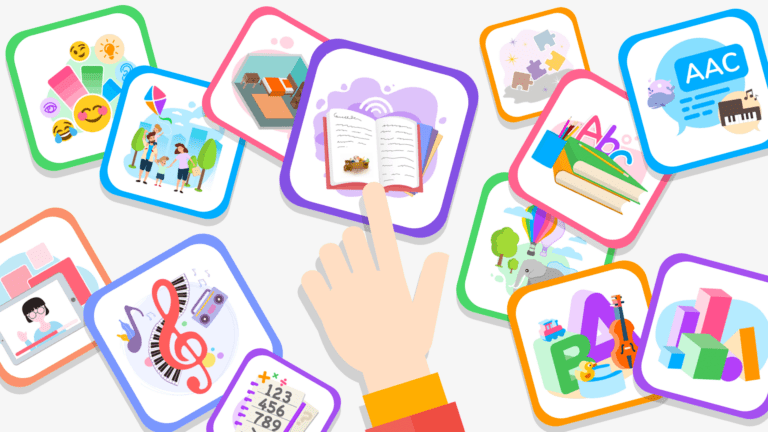
Zafer is from Ankara, Turkey, where it is estimated that 90% of autistic children do not get an education. The Turkish government offers children with special needs only 12 hours of education per month.
When Zafer got his first smartphone, his autistic brother Alper took a special interest and quickly learnt to navigate the phone. Zafer realised that this was an excellent opportunity to use the smartphone to teach his brother.
At the time, Alper was 6 years old, non verbal and could not read or write, however he could find pictures on the smart phone to communicate. There wasn’t many apps which focused on the learning priorities of children with special needs in mind. For example, they had too much information, animation or colours on the screen, which can be visually overwhelming and cause distraction.
Alongside his university friend and Alper’s teacher, Zafer created simple educational games. The first game he made was aimed at teaching colours and he was so impressed with how Alper learnt through the app, where other methods had not seemed successful.
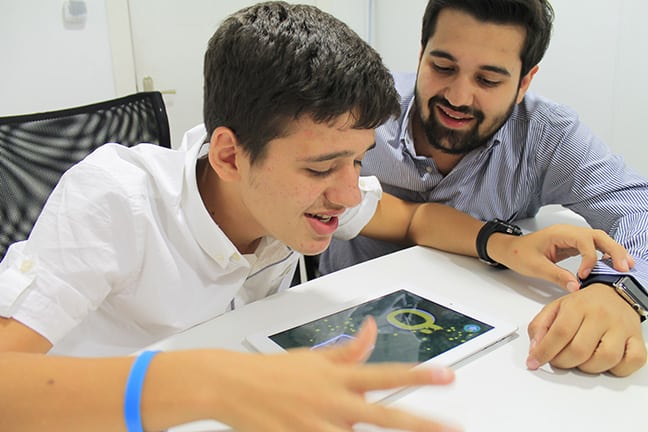
More educational games followed with concepts such as money, reading, mark making, shapes and Social Stories. Otsimo also now has a free AAC (Augmentative and Alternative Communication) app to help non verbal individuals to communicate.
A lot of children are really motivated by the cause and effect elements of using tablet and smartphone apps and this can be really engaging for them.
Otsimo wants to give families an opportunity to be part of teaching concepts through the use of the app. Supporting families to be part and sharing the educational journey with giving a framework of teaching concepts, social skills and communication.
The app also aim to tech vocabulary can then be further taught and extended in practical contexts, which will help children to understand and generalise vocabulary.
Zafer is working with the Ministry of Education in Turkey, trying to close the gap by giving a tool to support teaching using the app.
Watch Zafer and Alper in the BBC world hacks video BBC World Hacks ‘How brotherly love led to an app to help thousands of autistic children’
I hope you enjoyed this episode of the podcast!
For more information about Otsimo, visit:

A personal message about tablet and smart phone use
With the ever increasing concerns over the amount of screen time children are having, it is important to note that the use of smart phone or tablet apps must be controlled and structured.
There is a big difference between using educational apps for learning and apps for entertainment.
At school, we must ensure that tablet apps have a learning purpose and most importantly, that children are accessing a range of different practical learning experiences to support generalisation of learning.
Steph Reed
The post Podcast #10 Learning through technology with Zafer Elcik Co-Founder of Otsimo appeared first on Autism Spectrum Teacher.
26 March 2020, 8:54 pm - 24 minutes 7 secondsPodcast #9 The need to chew! Sensory needs with Jenny McLaughlan, founder of ChewigemLast Updated on January 30, 2023 by Steph Reed
Podcast Episode Notes
In this episode of the podcast, it was a pleasure to speak with Jenny McLaughlan, the founder of Chewigem.
As well as being a support community for different sensory needs, Chewigem have designed and created a range of chewing, fidget and sensory aids for children and adults.
Sensory needs
Our brain processes the sensory information around us; what we see, hear, smell, taste and touch, as well as how it makes us feel; temperature, balance and pain.
Some people, including many autistic individuals, may experience extremely heightened senses where sensory input is exceptionally amplified, or on the other hand, barely registered.
This differs from person to person and presents differently in each individual.
Sensory seeking
For individuals with under sensitive senses, they may seek out different sensations in order to get the sensory feedback.
Examples of sensory seeking behaviours include chewing or repeatedly seeking out sensations such as smells or touch through hugs, tight clothing or feeling specific textures.

Chewigem
In the podcast episode, Jenny tells us the story behind Chewigem. How it started as a baby chew and expanded to support people of all ages.
‘Chewies’, ‘chew toys’ or sensory supports can help those to receive sensory input, in a safe way. For example, I have taught children who will chew on their clothes, toys or anything around them.
Jenny explains how Chewigem is supporting the community by providing supports that have been purposely made for the function of giving sensory feedback, such as wearable chewing resources such as these:




Chewigem also provides support to help those needing advice on how to find the right supports for individual sensory needs on their website and Facebook group.
Jenny describes how a lot of people find Chewigem by searching ‘how to stop chewing’. When people learn that chewing has a sensory function and begin to accept chewing, there are different types of chew supports available that can help.
When chewing is managed in a safe and controlled manner, this can support someone to focus and be better regulated. This can therefore have a positive impact on learning, confidence and wellbeing. Jenny tells us some very positive success stories!
Chewigem are supporting the community to embrace their needs, not feel bad about it and instead, feel confident in talking about it.
Subscribe for free in any podcast app!
Apple PodcastsAndroidby EmailRSSFree Supporting Sensory Needs Guide
The post Podcast #9 The need to chew! Sensory needs with Jenny McLaughlan, founder of Chewigem appeared first on Autism Spectrum Teacher.
4 March 2020, 9:04 pm - 30 minutes 58 secondsPodcast #8 Enhancing communication opportunities: Autism and learning disabilitiesLast Updated on January 30, 2023 by Steph Reed
Podcast Episode Notes
How can we ensure we provide lots of opportunities for communication!?
The Environment
Total Communication encompasses all the different ways we can communicate: speech, body language, gesture, eye contact, Makaton sign, body sign, symbols, pictures, photos, words, facial expressions, tone of voice etc.
A Total Communication approach should be used at all times, giving as much opportunity for individuals to communicate and to understand your communication.
Ensuring an individuals preferred means of communication is encouraged and they have access to the needed resources at all times.
Knowing the communication behind the behaviour of our children and young people is essential to support their communication.
It is also important to understand how much meaning the individual is taking from communication supports around them, for example, do they recognise a symbol or photo. Would an object have more meaning to them?
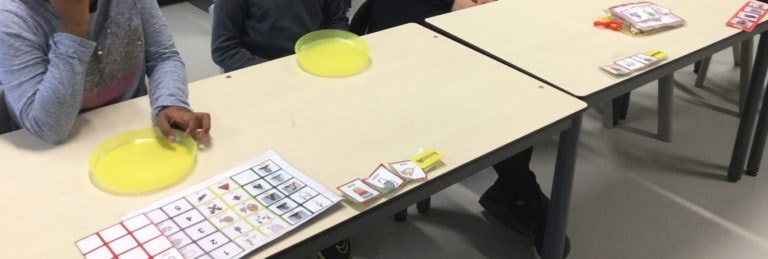 Examples of personalised communication supports easily accessible on the table
Examples of personalised communication supports easily accessible on the table
Enhancing communication by adapting the environment
Classroom/Home
Think about the individuals access to needed communication supports (i.e. visual prompts for physical needs such as ‘toilet’ and ‘drink’. These need to be placed in accessible places such as on the wall and on the child’s table for easy access.
Encouraging the individual to want to communicate through highly stimulating and engaging resources and toys.
Providing choice i.e. giving a choice of 2 objects or a choice board of a selection of resources.
Ensuring there is an element of choice in each lesson for those learners who are able to make choices or learning to make choices.
Using dedicated spaces in the environment to communicate what happens there (i.e. a calm space with bean bag or work space with table.
Visual structured systems that communicate a message i.e. a numbered system that an individual works through numbered activities 1 – 4 at the table or 3 cups in the bathroom with the sequence of resources such as toothbrush, toothpaste and flannel. Maybe its a photo of the individual on a chair showing that it is their chair or a circle on the floor showing where to sit.
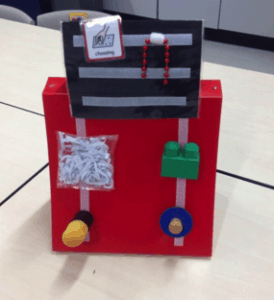

Playground/Garden
Does the individual have access to needed visual communication supports? Do we need to put laminated photos or pictures outside as visual prompts or an outside vocabulary board to support communication?
Are the resources outside stimulating and engaging? Do the individuals want to communicate or request for specific resources?
Intensive Interaction: an approach to developing early fundamentals of communication through interactions with individuals at their level of communication. Engaging in an interaction following the lead of the individual and taking turns in playful exchanges for example, joining the actions, sounds of the individual, playfully imitating them in a communicative exchange.
I have written more about Intensive Interaction here.
You can find further information about this highly effective approach to early communication development for autistic individuals or those with complex needs at the Intensive Interaction website.
Relaxing Time
Choice of relaxing or sensory resources or trays to request. Perhaps choice of activity such as doing stretches or jumping on the trampette. This can be presented visually for learners who can access this type of communication.
Massage on a choice of body parts for example leg or fingers. This could be presented using photos or symbols perhaps.
Story Time
Making the story come to life with different multi-sensory props. Having the opportunity to request for these probs and interact with them.
Using switches, photo, picture or object boards to interact with different parts of the story and support in answering questions.
Think about the individuals you support and how the environment or our teaching approach can be adapted to further enhance communication and interaction.
Inclusive Teaching Strategies Guide
Online Training Courses
Take a look at our online courses full of videos and resources to empower you with knowledge, strategies and skills to enhance children's learning and development
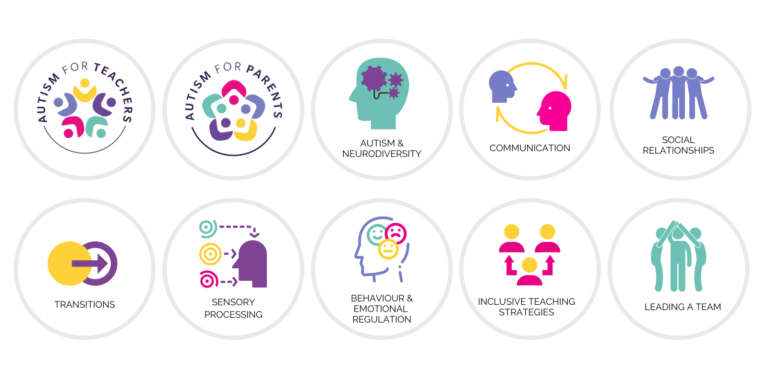 Show Me More!
Show Me More!
The post Podcast #8 Enhancing communication opportunities: Autism and learning disabilities appeared first on Autism Spectrum Teacher.
19 February 2020, 1:08 pm - 20 minutes 33 secondsPodcast #7 Supporting reading with Angela Charalambous from the Workshop Reading CentreLast Updated on January 30, 2023 by Steph Reed
Podcast Episode Notes
This episode of the podcast is all about supporting children with reading and my special guest is Angela Charalambous, a reading specilaist from the Workshop Reading Centre in Johannesburg.
A child’s reading ability will have a huge impact on all areas of learning.
Angela discusses different strategies to support a child to enjoy reading and feel more confident!
Classroom strategies to support children who have reading difficulties
- Making learning multisensory
- Using visual supports such as pictures and objects
- Enabling children to present their work in different formats
- Using the child's interests
- Accommodating sensory needs and ensuring child is comfortable
- Breaking down work into manageable chunks
- Revisiting learning
- Giving an outline of lesson and tasks
- Giving explicit instructions
Maintain a love of reading
Read with the child in 3 different areas:
Easy material for the child such as a simple book below age level, in order to boost confidence Reading age appropriate material Reading at a challenging or above age level, perhaps in the child’s area of interest to ensure their motivationParents and carers, continue reading with your child as long as you can, especially themes that are of interest to the child. Spending time reading with parents supports to manifest a love of reading.
Ensuring children’s confidence in their reading is key
Thank you Angela!
Visit the Workshop Reading Centre website to find out more information about the assessments, dyslexia screening, Cellfield intervention and workshops for parents and teachers that Angela mentioned in the podcast episode.
Inclusive Teaching Strategies Guide
Online Training Courses
Take a look at our online courses full of videos and resources to empower you with knowledge, strategies and skills to enhance children's learning and development
 Show Me More!
Show Me More!
The post Podcast #7 Supporting reading with Angela Charalambous from the Workshop Reading Centre appeared first on Autism Spectrum Teacher.
5 February 2020, 5:59 pm - 48 minutes 46 secondsPodcast #6 Anxiety in autism with Jane Crawford and Helen CottellLast Updated on February 3, 2023 by Steph Reed
Podcast Episode Notes
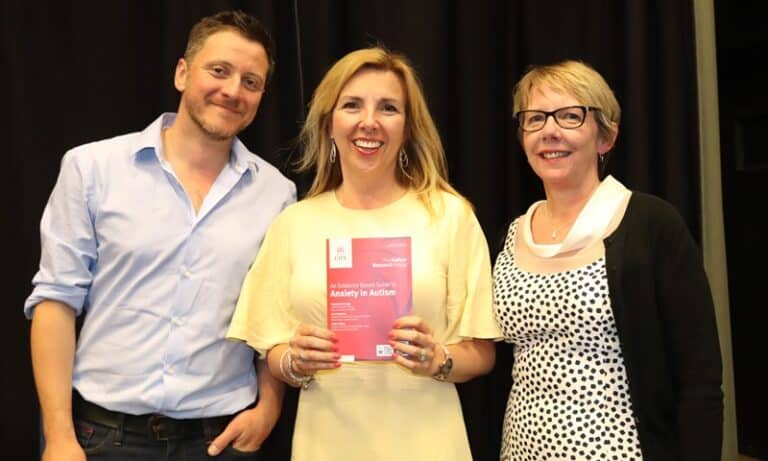
In this episode of the podcast, it was such a pleasure to speak with Jane Crawford and Helen Cottell from the West Sussex County Council Autism and Social Communication Team. They have recently put together an evidence based guide to anxiety in autism with Sebastian Gaigg from the Autism Research Group at City University of London.
The guide gives a brilliant summary of what is currently understood about anxiety in autism. One of the key and significant findings is that “anxiety disorder is not simply a part of autism, but an independent co-occurring disorder that can be addressed and treated in its own right”.
It can be difficult to identify anxiety disorder in autism, as it will often present in an ‘unusual’ way. For example, social anxiety may manifest not because the autistic individual is worried about being embarrassed in a social situation, but because they may find it difficult to navigate a social situation.
The statistics:
The research shows that while 10 to 15% of the general population will have an anxiety disorder at some point in their life 40% of autistic children Adolescents and adults are thought to have at least one and often more anxiety disorders.
Anxiety disorder is clearly more prevalent in the autism population. It is however ‘not part of autism’ and therefore needs to be treated as a separate entity.
Neurotypicals can often generalise strategies to help anxiety, whereas autistic individuals may find it difficult to generalise and therefore may need support to learn a new strategy for a new situation.
Possible causes of anxiety in autism:
Alexithymia: difficulties in understanding ones own emotions
Intolerance of uncertainty: as a result of sensory processing differences leads to unpredictability.
At a basic level, ‘intolerance of uncertainty’ + ‘alexithymia’ = anxiety in autism.
However it is more complex than that.- The sensory processing differences which are part of the autistic condition, will often contribute to the intolerance of uncertainty. For example, a difficulty with or not being able to predict how the sensory system will respond next.
- What the City, University of London describe as as ‘maladaptive emotional regulation’ which is the difficulty to self-regulate emotionally. A difficulty we often see in the pupils we work with, where they may overreact, or sometimes under react to situations (for example, when they get feedback on their school work). This is clearly affected by alexithymia (the difficulty in understanding one’s own emotions) which is in turn impacted by the interoceptive sense (internal processes such as emotional feelings, temperature and pain) which links back to sensory processing differences/ difficulties. Individuals may have difficulties both understanding their emotions, which may then make it difficult for them to effectively regulate their emotions.
- The final part of the model identified by City University of London is repetitive behaviours. These may help to reduce the intolerance of uncertainty as they are under the control of the individual and are therefore more predictable and so may contribute to reducing anxiety.
Some effective strategies to help reduce and manage anxiety (which are explained further in the guide):
- ‘Intolerance of uncertainty’: Social Stories and Comic Strip Conversations plus the Zones of Regulation program, introduces a holistic approach working on all the elements that support effective self-regulation.
- Sensory processing: Working with the individual to develop their own sensory profile (which may change over time) then introduce preventative supports and activities such as Sensory Circuits as well as reactive sensory supports and activities.
- Alexithymia: Many autistic individuals (50%) have difficulties identifying and describing their own emotions. Mindfulness can have an impact as individuals begin to listen and learn to the internal messages their body is giving, supporting their interoceptive sense development. City University of London research suggests that mindfulness cognitive behaviour therapy (CBT) programme had the most impact for the most sustained amount of time.
Having a good understanding of autism is probably the most important factor in developing strategies and putting support in place for an autistic pupil with anxiety.
A lack of understanding may be the biggest contributor to an autistic individuals intolerance of uncertainty.
Understanding the social and sensory differences of an individual will help indicate what may constitute their intolerance of uncertainty and what the impact of their sensory processing difference might be on them.
A huge thank you to Jane and Helen for your time recording this podcast and for all of this really helpful information!
In the ‘Evidence Based Guide to Anxiety in Autism’ find further information about:
- What causes anxiety in autism
- Sensory processing differences
- Alexithymia
- Anxiety treatment approaches
- Tools to support anxiety management
- Emotional awareness tools
- Intolerance of uncertainty tools
Inclusive Teaching Strategies Guide
Online Training Courses
Take a look at our online courses full of videos and resources to empower you with knowledge, strategies and skills to enhance children's learning and development
 Show Me More!
Show Me More!
The post Podcast #6 Anxiety in autism with Jane Crawford and Helen Cottell appeared first on Autism Spectrum Teacher.
22 January 2020, 3:33 pm - 34 minutes 29 secondsPodcast #5: Autism and early intervention with Haia IronsideLast Updated on January 30, 2023 by Steph Reed
Podcast Episode Notes
I have a brilliant guest and former colleague of mine, Haia Ironside! She has over 10 years’ experience working in education. Haia is a qualified teacher and has taught in both mainstream and special schools in the UK as well as in an integration specialist based in Germany. Haia has a Masters in Autism Studies from the University of Kent. Haia has a particular interest in early intervention and spent three years teaching in the early years at a special school for children with a diagnosis of autism in London.
This makes her a great guest to speak on the subject of early intervention!
In this episode, Haia and I discuss:
- There are many different autism interventions and approaches. It can often be overwhelming and confusing for parents and carers. Each child needs their individual needs and context to be considered before trialling and finding effective interventions.
- A combined approach
- The importance of a multidisciplinary team
- Intervention which is not directly targeted at the child but in the form of supporting parents, families and educational settings.
- Ensuring effective monitoring and evaluation process is in place to review impact
- Highlighting the question “what are we intervening for and why?”
- The importance of effective home and school partnership where all information is being shared
- The SCERTS approach –
- Being informed about specific interventions
- Most importantly, acting in the child’s best interests
- Family support
- Family engagement
- Knowing what support is available and support groups.
Links mentioned in the podcast:
Research Autism list of interventions
The Guardian Video: Meet Saffron: inside the colourful mind of a girl with autism
My Facebook support group ‘Autism and inclusive teaching ideas’, come and join!
Haia Ironside:
“As we are increasingly able to diagnose children as autistic at a very young age, we are able to explore and identify interventions to support their development. I define early intervention as simply trying to do something as early as possible to support a child’s development. There are now numerous different programs. If your child is diagnosed as autistic, you are likely to go down a rabbit hole into a wonderland of different options.
Ultimately, I believe that the outcome of any intervention depends on the context of the child and the therapy.
Let’s take two examples, child A and child B and describe two different successful outcomes. Child A was diagnosed as autistic at 4 years old with relatively mild symptoms so parents decided to send them to a mainstream school. Child A receives regular speech and language therapy input, sessions which are designed around their interests and are therefore extremely motivating! Their guardian also integrates some of the strategies into the home environment. Over a period of time, there is a decrease in Child A’s linguistic and communication deficit. In this instance, both the context around the child and the particular therapy worked towards a positive outcome. Child B is nonverbal and attends a special school. Child B was diagnosed at 5 years old. Child B has been engaging in daily Intensive Interaction sessions and staff and parents are increasingly aware of various different attempts at communication, therefore able to understand and respond to reinforce the behaviour. Child B is increasingly initiating communication! Again, both the context around Child B and the particular intervention are working towards a positive outcome.
These two examples have several things in common. Firstly, both children have a diagnosis which gives them and their families access to further support. Secondly both children are participating happily in different forms of intervention to support their development. Thirdly, the interventions are being effectively conducted by trained professionals. And finally, and perhaps most importantly, the strategies are being integrated into the home environment!
Some important issues to consider with regards to early intervention:
- Firstly, whilst many interventions are supposedly evidence based, I would caution that the evidence tends to have been collected by the people who designed the program and the robustness of the research is often quite questionable. I have asked Steph to include a link to the Research Autism website which lists over 100 interventions alongside details of the research evidence.
- Secondly, there is an important ethical question around consent to participate in a particular program. I hope we all agree that any intervention should always be conducted in the interests of the individual. It is also generally quite easy to see if someone is motivated to participate in an activity or absolutely hating the experience.
- Thirdly, it is important to consider outcomes. Some people believe that the optimal outcome of an early intervention program is if the autistic child loses some of their traits such as linguistic, social or cognitive deficits. Whilst you might agree with this, I encourage listeners to go away and learn more about the debate which is concerned with whether the autistic person should become less autistic or society should become more understanding of neurodiversity. Here is a brilliant video from The Guardian showcasing nine year old Saffron and her family celebrating her autistic traits and personality.
- Finally, a slightly depressing point about resources. You as a parent or guardian may have done your research, decided on a particular form of intervention, evaluated whether your child will be inherently motivated to partake, fully understood and support the expected outcomes so you decided to try to make it happen. Unfortunately, it might not be available in your region or you are going to need to sell your house to pay for it. I am aware that this is painting quite a bleak picture but I think that this is the reality for many autistic people and their families, friends and carers. For a comprehensive guide to the process of diagnosis in the UK and access to further support, I recommend taking a look at the NICE guidelines which cover diagnosis of autism as well as referral from birth to 19 years old. There is also a separate version for adults. The guidelines are written by experts.
A combined approach both myself and Steph promote and have experience in implementing within the school context is SCERTS:
SCERTS stands for Social Communication, Emotional Regulation and Transactional Support. In its current form, the SCERTS program was developed in 2007. Numerous studies have been conducted to explore the efficacy of this approach. SCERTS is centred on the child and aims to combine elements of many different programs such as speech and language therapy and social activities into one model. The key idea is to support the autistic child to become a confident communicator without problems that could interfere in their learning or development of positive relationships.
Conclusion
There is not necessarily a right intervention. However, families and professionals can work with children to support them to learn, understand and be able to process the world around them in a variety of different ways.
Haia’s advice:
- Do the research, understand what an intervention is about and what it intends to do
- Seek professional advice
- Seek extra support in the form of support groups and respite, this will be so beneficial for you and for your child as burn out is a real risk
- Don’t give up hope. Your child is a unique individual and you should be proud of their neurodiversity.”

Haia Ironside
Inclusive Teaching Strategies Guide
Online Training Courses
Take a look at our online courses full of videos and resources to empower you with knowledge, strategies and skills to enhance children's learning and development
 Show Me More!
Show Me More!
The post Podcast #5: Autism and early intervention with Haia Ironside appeared first on Autism Spectrum Teacher.
8 January 2020, 4:04 pm - 24 minutes 5 secondsPodcast #4: Success stories: The impact of visual resources for autistic childrenLast Updated on February 3, 2023 by Steph Reed
Podcast Episode Notes
One of the ways we can really enhance children’s understanding is through the use of visual resources. By visual resources I mean anything from pictures to photos to symbols to physical objects. Anything visual that when paired with a word, enhances meaning and understanding.
So an example of using a visual resource versus not using a visual resource would be… When asking the question “do you want an apple or pear?”. I could ask this question with no visual resource or I could ask this question by having an actual apple and pear in each hand, or by showing a picture of an apple and pear.
The addition of the visual resources can really help a child’s understanding of the question, as well as help the child to focus on the question and additionally help to develop communication and language because the adult is modelling the vocabulary in context. For example, saying ‘apple’ when showing an apple.
Using visual resources to enhance understanding and develop language and communication can make such a difference and will help to prevent challenging behaviour, because the child’s understanding is supported.
In this podcast episode, I share examples through my experience of teaching children with autism, where using visual resources has made such an impact for the child. These experiences taught me so much and I want to share this with you.
Success story 1: Weeing in the toilet – the importance of ensuring the visual resource we use is meaningful and specific.
Success story 2: Like and don’t like visuals – the importance of making visual supports accessible.
Success story 3: Now and next board – how supporting transitions visually can impact a child’s understanding, engagement and learning.
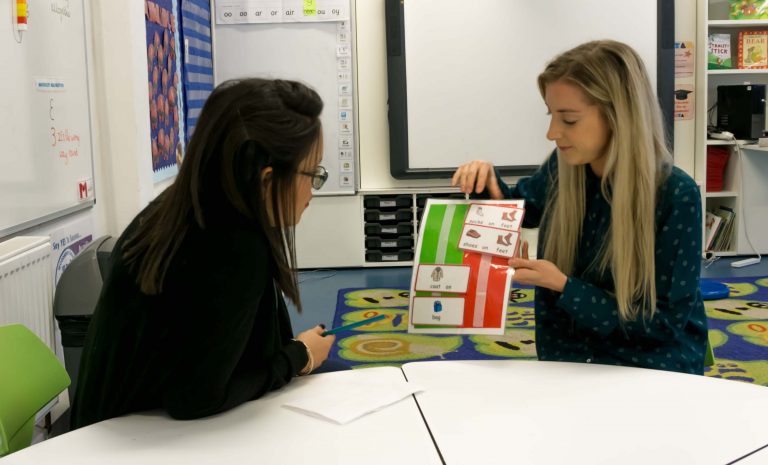
I also provide information on an upcoming training workshop with Widgit Software and myself on April the 26th 2019, 10:00 – 12:30 at Camden Learning Centre in London.
I hope you enjoy the episode! Please share it with anyone who you think will benefit from the information or who may find it interesting.
Inclusive Teaching Strategies Guide
Online Training Courses
Take a look at our online courses full of videos and resources to empower you with knowledge, strategies and skills to enhance children's learning and development
 Show Me More!
Show Me More!
The post Podcast #4: Success stories: The impact of visual resources for autistic children appeared first on Autism Spectrum Teacher.
7 April 2019, 6:54 pm - More Episodes? Get the App
Your feedback is valuable to us. Should you encounter any bugs, glitches, lack of functionality or other problems, please email us on [email protected] or join Moon.FM Telegram Group where you can talk directly to the dev team who are happy to answer any queries.
 The Teacher Nook: Tips, Tricks and Tools for SpEd Teachers in Autism Classrooms
The Teacher Nook: Tips, Tricks and Tools for SpEd Teachers in Autism Classrooms
 Stories About Autism
Stories About Autism
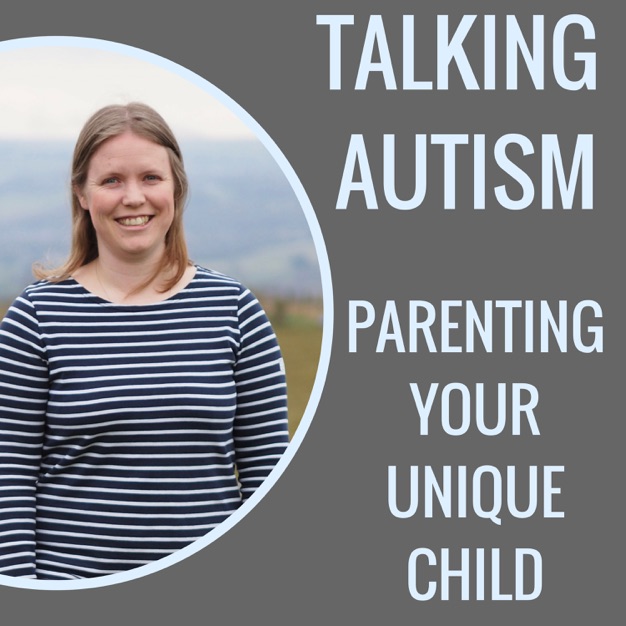 Talking Autism: Parenting Your Unique Child
Talking Autism: Parenting Your Unique Child
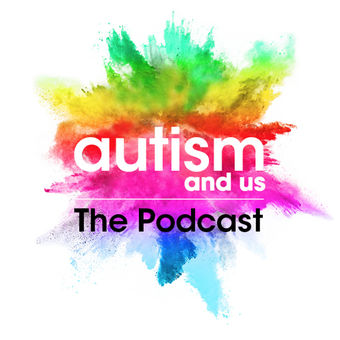 Autism and Us
Autism and Us
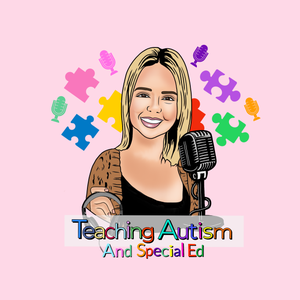 Teaching Autism and Special Education
Teaching Autism and Special Education